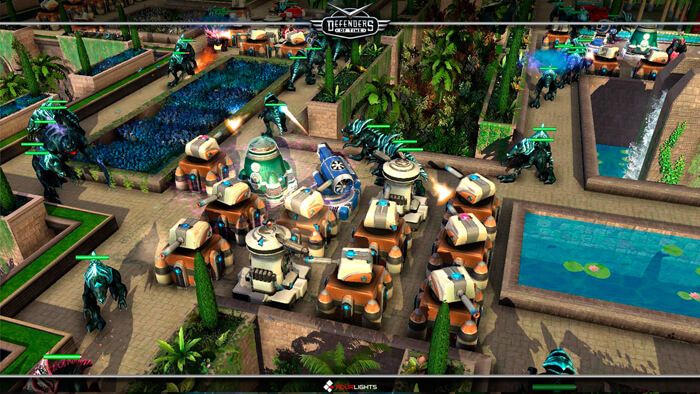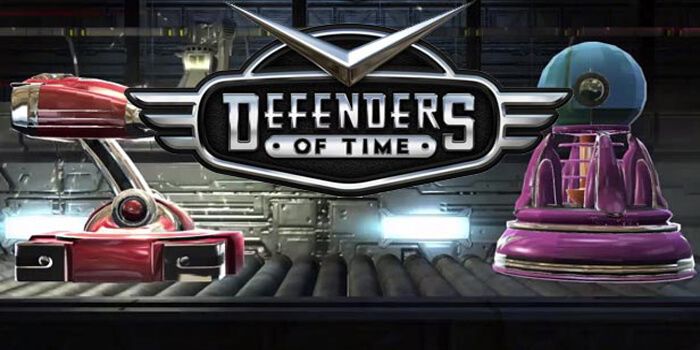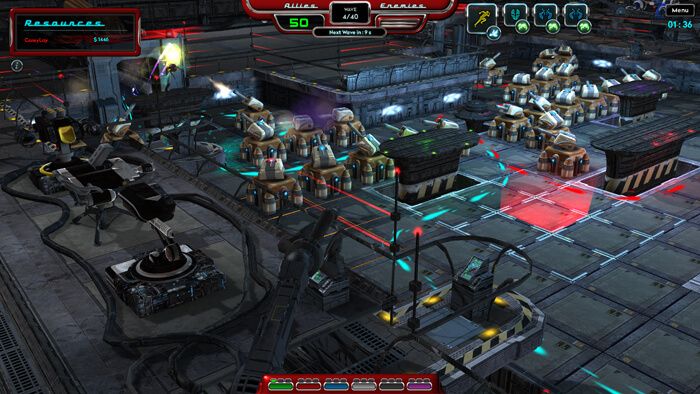If a game like Plants Vs Zombies managed to carve a place for itself by bringing the basics of the tower defense genre to the masses, developer Four Lights has chosen to mold Defenders of Time in an image that lies at the most opposite end of the accessibility spectrum possible. Borrowing from many of the best traditions of the genre, Defenders of Time is a love letter to old school tower defense that brings plenty of tweaks to the formula - and then cranking everything up to eleven.
The end result is a game that showcases Four Lights' understanding of the genre's mechanics, and how to alter them in order to squeeze out every last drop of white knuckle fun. That being said, the game's unforgiving design, coupled with the lack of an online community has the potential to leave some players feeling frustrated - and perhaps a little short-changed by the overall experience.
The single player offerings do their best to acclimate the player to the game's unique blend of strategy and speed, with the title reflecting the bare-bones "narrative" the game is based on: aliens are invading and threatening the very fabric of time, and it's up to the player to stop them (that's about it). While there is talk of a larger campaign mode being implemented, the story hook currently serves as little more than an excuse for the developers to vary the maps as much as possible.
Defenders does truly shine in this regard, as the visual monotony found in many tower defense games is entirely absent here due to the numerous locales and obvious level of polish given to each. Between futuristic space, harsh terrain and ancient and almost serene outdoor environments, the game does manage to convey a decent sense of scope. Unfortunately these varied and detailed environments also bring up the first instance of a recurring theme that, while slight, could easily keep this game from taking hold with not just casual players, but anyone not already a dedicated fan of the genre.
The problem? Tower placement. The game lets players see the path enemies will take from spawn point to attack point; placing towers around this path will alter it, hopefully lengthening the route so players can maximize defenses. However, it's not always clear upon which terrain a tower can be placed - sometimes grass can have a tower, but other times it can't. The same goes for dirt or rock. Frequently, even surfaces that were side-by-side on the same elevation didn't both allow towers. Because the locales are always different, getting accustomed to what's allowed and what isn't can be a headache. Even worse, having to learn through trial and error during gameplay is incredibly frustrating because, again, did we mention how fast the game is?
Many of these problems could be avoided if the game was in the least bit interested in guiding the player through all but the most obvious mechanics. But Four Lights chose not to include anything more than "these are bad guys, stop them by putting things on the map." The HUD is littered with symbols, numbers and information that the player must learn on the fly - because why bother giving those tips up front and avoiding frustration?
Even Four Lights' excellent design choices that help streamline such a quickly moving game are marred by a lack of basic information. They wisely simplify the amount of clicking and visual searching by having each tower type start with the same initial tower. A floating menu system then makes upgrading each one a breeze, but finding out any detailed information on these objects has to be read on the game's website. And just in case it isn't painfully clear yet, the speed of the game makes learning through gameplay an infuriating chore.
Perhaps the multiplayer is where these players will head to learn the ropes. With up to 4v4 gameplay, the multiplayer takes the frantic action of the single player and sharpens it with the interactions that only real players can offer. It manages to give the chaos a sense of refinement - not an easy feat for any game - as players work with and against each other. But good luck finding 7 other players without sending out demo invites. It's a shame that there aren't usually many, or really any, of the requisite live players hanging around to share all the time that needs defending.
Four Lights took a couple of major risks with Defenders of Time: the mechanics-above-all approach to its design is admirable, but may also prove daunting for many players (though tower defense veterans will likely love the game's speed and ferocity). They also rolled the dice by putting so many eggs in the multiplayer basket, and while the game isn't having the technical issues that soiled many major recent releases, the lack of a community leaves it nearly unplayable all the same.
It's a catch-22 in the end: difficult to recommend in its current form, yet its main path to becoming worthwhile is by having players check it out. Those willing to make the purchase should do so knowing that Defenders of Time has the potential to be a great game, but their mileage may be limited. Everyone else still feeling curious should have a look, and see if they are willing to take the same plunge.
Defenders of Time is currently available on Steam for both PC and Mac.



